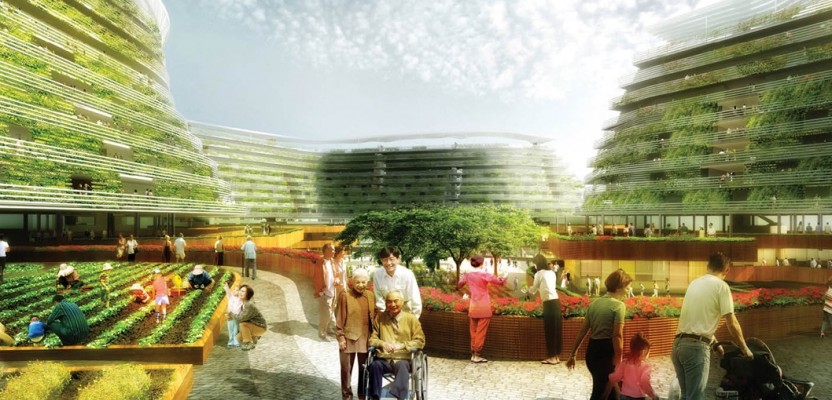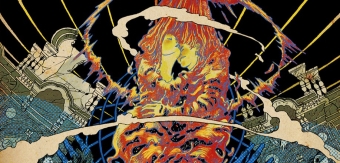We spend inconceivable hours dreaming of what our future might hold. How many kids we might have, if any at all. What kind of car we might drive. Where we might live. Yet, there’s a perception that once you cross the threshold into old age these dreams cease to be, and it becomes all magnolia functionality – to support our sedentary life.
We are lasting longer. And, whilst it’s true that old age presents us with certain challenges that our youth averted us, as the global population of over 65s continues to climb, shouldn’t we acknowledge that we don't all leave our sense of good taste and social value behind in our forties?
Whilst living longer has its obvious benefits, an aging population threatens to strain social and economic frameworks. We’re running out of space and food, and our advancing fragility often requires additional care.
So how do we maintain quality of life, rather than just prolonging the days?
Architectural firm SPARK – who have offices in London, Singapore and Shanghai – hope to tackle both the ostracisation of the elderly and the growing socio-economic burden of age, in one fell swoop.
Introducing Homefarm – SPARK’s vision of a new type of residential care village, in which the patrons can live out their "twilight years" in a vertical farming community – in the middle of the urban landscape.
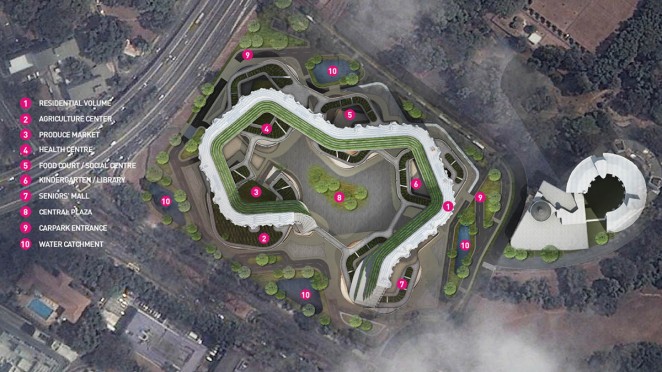
Singapore has been a longtime pioneer of creating greener grey spaces, and the Homefarm project – though still in its conceptual stages – hopes to begin the first phase of building in 2018.
Although radically beautiful in its aesthetic (not a hint of magnolia here), SPARK's design wasn't conceived purely from the standpoint of a group of architects. The vision was a two-pronged response to the stigma of old age – with all the feelings of inadequacy that it can bring – and the heavy reliance on imported foods in Asia's bulging cities.
Singapore, in 1970, counted 20% of its landmass as farmland. Now it has just 0.5% of land allotted to growing crops, so it imports 90% of its food from overseas. In Japan – believe it or not – adult diapers are outselling baby diapers by almost double, and the over 65s count for 20% of the population. Singapore will achieve the same percentage by 2030.
Stephen Pimbley, Director of SPARK argues;
“Current models for contemporary aged care living are unsuccessful and our social views of age related issues are outdated... [we must change] the way we think about the architecture that supports this section of our community".
Winner of Future Experimental Category at the World Architectural Festival 2015 – the complex aims to provide a range of living accommodation to suit not only single or coupled seniors but also their extended families – thereby promoting the waning Asian tradition of multi-generational housing. The carer to elderly ratio in Asia was 13.5: 1 in the 1970s, and this figure had shrunk to 4.8: 1 by 2015, so the reinstatement of the family unit is a key difference between this and other models of care. Most importantly, it's a model which is appropriate for the society it seeks to serve – not a "one size fits all" deal.
Aside from its living quarters, the homestead features a vertical, aquaponic, agricultural system – to feed its residents – a biomass power plant, farm produce market, health and social centres, leisure facilities and a kindergarten.
So, how does it work? In the world's smallest nutshell; compost, combustion, steam turbine generator and, voila; electricity.
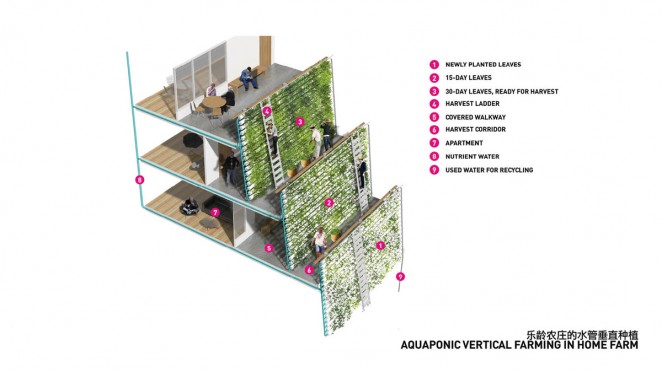
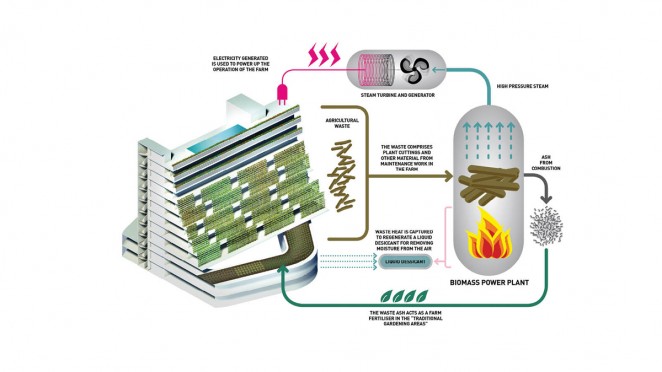
Sustainability covered, SPARK's adjacent ideology – creating a space in which elderly citizens feel valued – is fulfilled with the opportunity of work for its many residents. Holding a job within the village certainly isn't mandatory but, with a variety of light work available – to suit the abilities of its older residents – the belief is that an occupied life is a happy one.
Studies have consistently linked a predilection to remaining physically and mentally active with a slowed, and even halted, onset and progression of certain age-related diseases. So, really, sustainability – in every sense – is what Homefarm is trying to establish.
Others have already broken new ground with concepts of residential care. In Holland, De Hogeweyk village – built solely for the care of dementia sufferers – uses a "model town" approach to gently nod to the times when its residents could still recall their long-term memories. A community-living model allows those residing there to still feel part of the bigger social picture – cooking their own meals and attending the town theatre and other recreational activities together. Denmark has recently opened its own version of a similar model.
If SPARK realises its ambition, not only could the senior community live comfortable and fulfilled lives; they could sustain their own existence and help protect resources for future generations.

